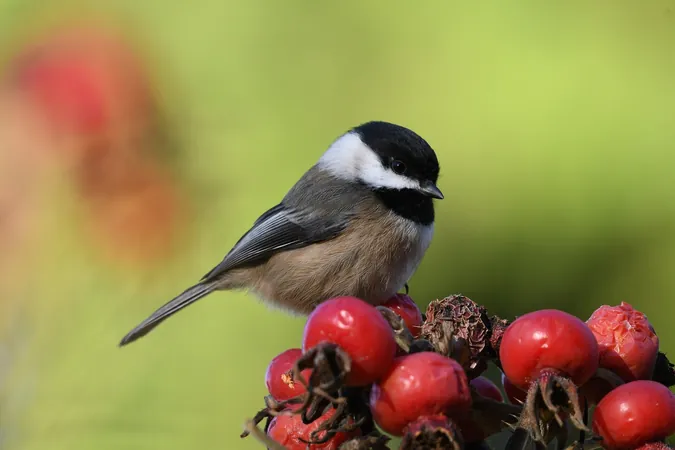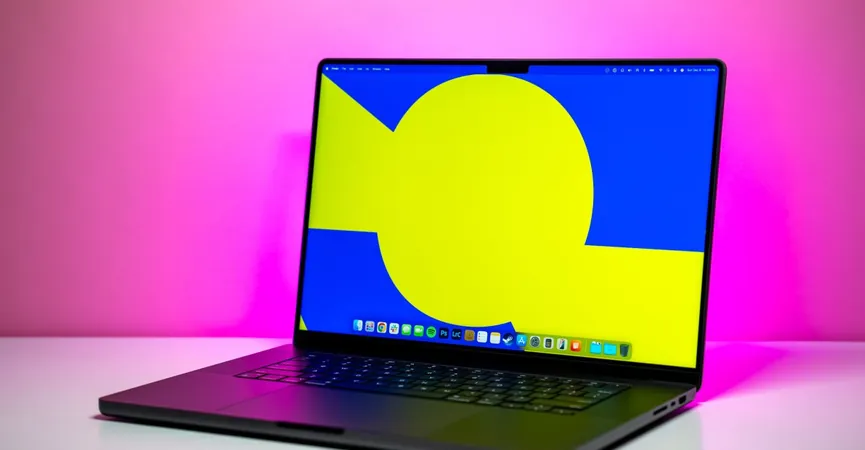
Unlocking Memory: How Chickadees Use Their Eyes to Navigate and Remember
2025-07-05
Author: Michael
Chickadees' Visual Memory Boosts Navigation
In a groundbreaking study by researchers at Columbia University's Zuckerman Mind Brain Behavior Institute, it was discovered that black-capped chickadees utilize their vision to activate their spatial memories. When these birds gaze at distant locations, specific neurons in their hippocampus—known as place cells—light up, suggesting a powerful link between sight and memory.
Vision as a Key to Spatial Recall
Animals often depend on their eyesight to recall the locations of hidden food or navigate toward goals. Place cells serve as the brain's navigation system, firing as creatures enter specific locations. Previous research on primates hinted at a connection between eye movements and hippocampal activity, but understanding this link in more dynamic settings remained elusive.
Innovation in Research Methodology
This recent study, published in the journal Nature, cleverly addressed challenges in tracking eye movements during free movement—a feat especially tricky with smaller animals like rodents that have limited gaze control. The researchers designed clever experiments to see if these place cells are activated simply by the birds looking at spatial targets from afar.
An Engaging Experiment Setup
Eight black-capped chickadees participated in a carefully controlled experiment within a 61-centimeter arena outfitted with identical perches, light cues, and moving feeders. Using a sophisticated multi-camera tracking system, researchers could pinpoint the head movements of the birds, while dual-camera video technology captured their eye positions based on corneal reflections.
The Results Are Revelatory!
The birds engaged in tasks that required them to visually search for food after cues were presented. Astonishingly, records indicated that nearly two-thirds of the hippocampal neurons reacted to the bird's navigational positions, while over half were tuned to where the bird was looking. Among neurons related to spatial memory, an impressive 75% also showed varying activity based on gaze direction.
Synchronizing Memory with Visual Attention
Notably, the research revealed that activation patterns align with rapid head movements, known as head saccades. Early responses were detected even before the bird fixated on targets, highlighting a predictive element. The study suggests that these birds' memory-related neuronal activities can synchronize multiple times per second as they navigate their environments.
A Unified Memory System
The findings illuminate how chickadees seamlessly integrate visual cues and memory recall. This dual coding of place and visual attention enables birds to not only form memories upon visiting a site but also to recall them from a distance when they return. This remarkable ability showcases the sophisticated interplay of sensory input and memory among these small yet mighty avians.









 Brasil (PT)
Brasil (PT)
 Canada (EN)
Canada (EN)
 Chile (ES)
Chile (ES)
 Česko (CS)
Česko (CS)
 대한민국 (KO)
대한민국 (KO)
 España (ES)
España (ES)
 France (FR)
France (FR)
 Hong Kong (EN)
Hong Kong (EN)
 Italia (IT)
Italia (IT)
 日本 (JA)
日本 (JA)
 Magyarország (HU)
Magyarország (HU)
 Norge (NO)
Norge (NO)
 Polska (PL)
Polska (PL)
 Schweiz (DE)
Schweiz (DE)
 Singapore (EN)
Singapore (EN)
 Sverige (SV)
Sverige (SV)
 Suomi (FI)
Suomi (FI)
 Türkiye (TR)
Türkiye (TR)
 الإمارات العربية المتحدة (AR)
الإمارات العربية المتحدة (AR)